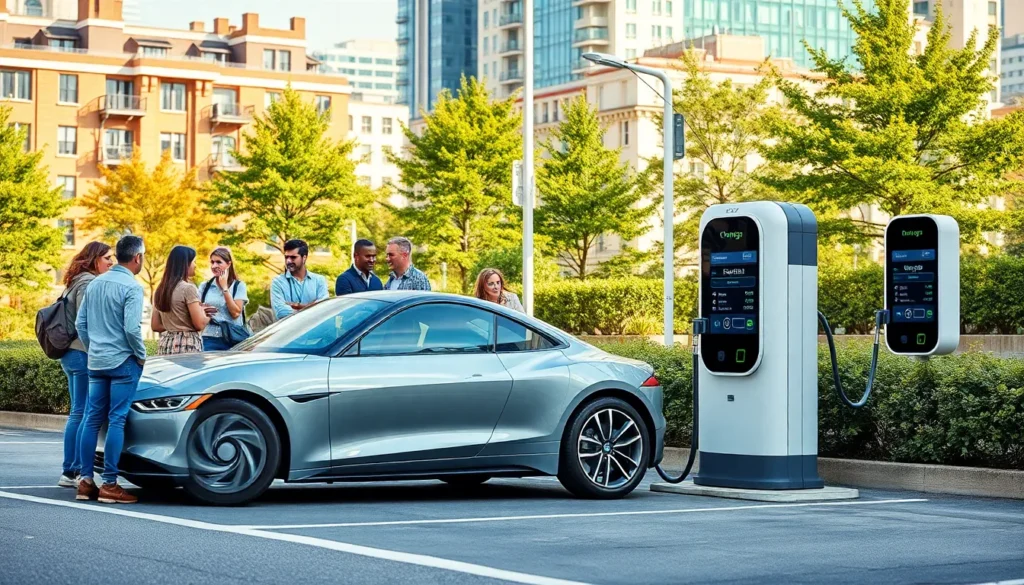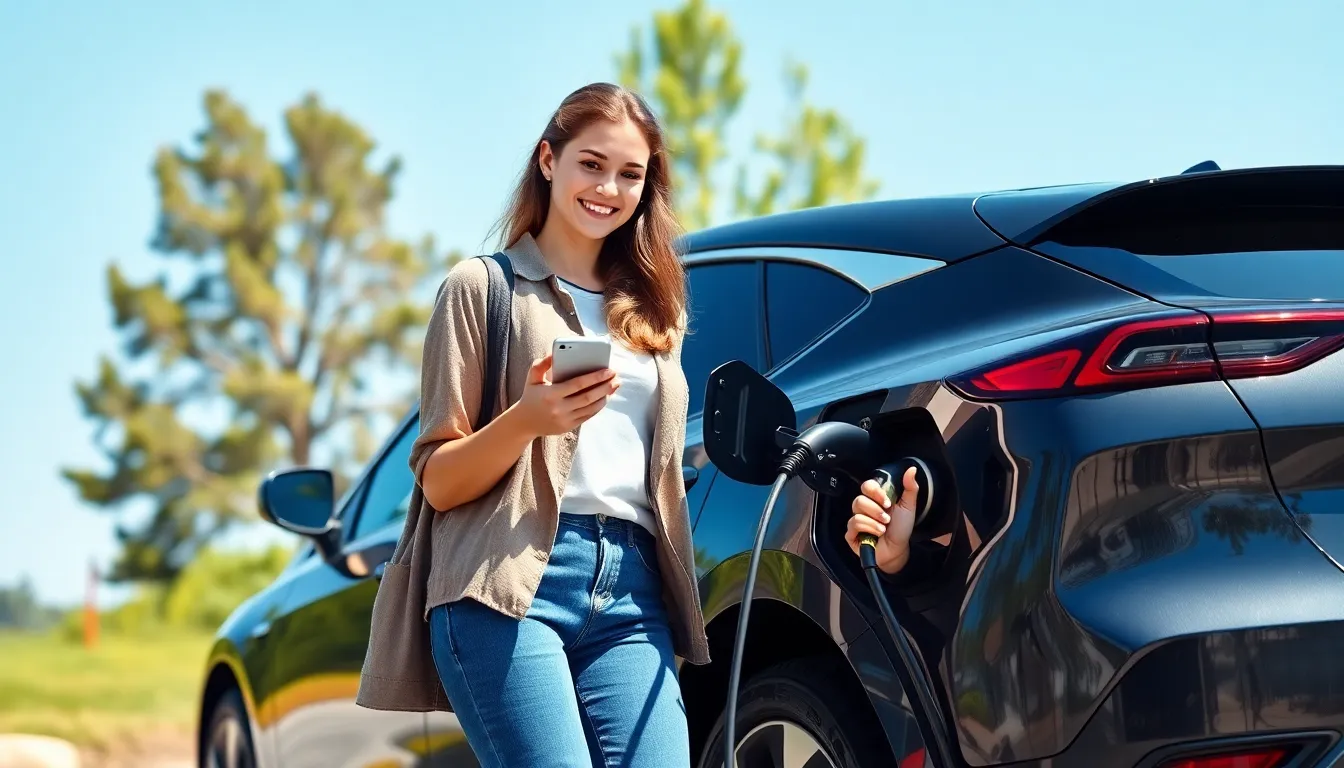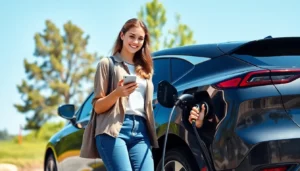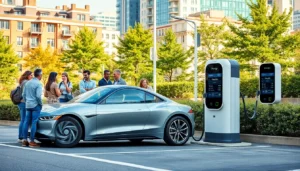As electric vehicles zoom into the mainstream, the need for on-road charging solutions is more pressing than ever. Imagine cruising down the highway, feeling like a rockstar, only to realize your battery’s running low. Cue the panic! But fear not—innovative charging solutions are popping up faster than you can say “range anxiety.”
Table of Contents
ToggleOverview of On-Road Charging Solutions
On-road charging solutions address the growing demand for electric vehicle infrastructure. These systems provide convenient access to power, easing range anxiety for drivers. Rapid charging stations play a crucial role, delivering significant electricity in a short period.
Wireless charging technology represents a cutting-edge approach. This method allows vehicles to charge while in motion, eliminating downtime associated with traditional plug-in stations. Fleets of electric buses and taxis are increasingly adopting this charging method to enhance efficiency.
Mobile charging units offer flexibility, catering to drivers in need of immediate power. These units can be deployed quickly to high-traffic areas, ensuring drivers find a charging source when they require it most. Various businesses partner with energy providers to establish charging networks, expanding the availability of these services.
Solar-powered charging stations contribute to sustainability efforts. By converting sunlight into energy, these stations reduce dependence on traditional energy sources. More cities are investing in solar installations to support the growing electric vehicle market.
Integration of charging solutions with navigation apps proves beneficial to drivers. Many applications now display real-time availability of charging stations, allowing users to plan their routes efficiently. Drivers gain peace of mind knowing they can locate nearby charging points.
Collaborative efforts among automakers, energy companies, and local governments foster the development of a robust on-road charging infrastructure. These alliances focus on improving accessibility, speed, and reliability of charging solutions. Technological advancements promise ongoing expansion of on-road charging options, meeting the needs of electric vehicle users.
Types of On-Road Charging Solutions
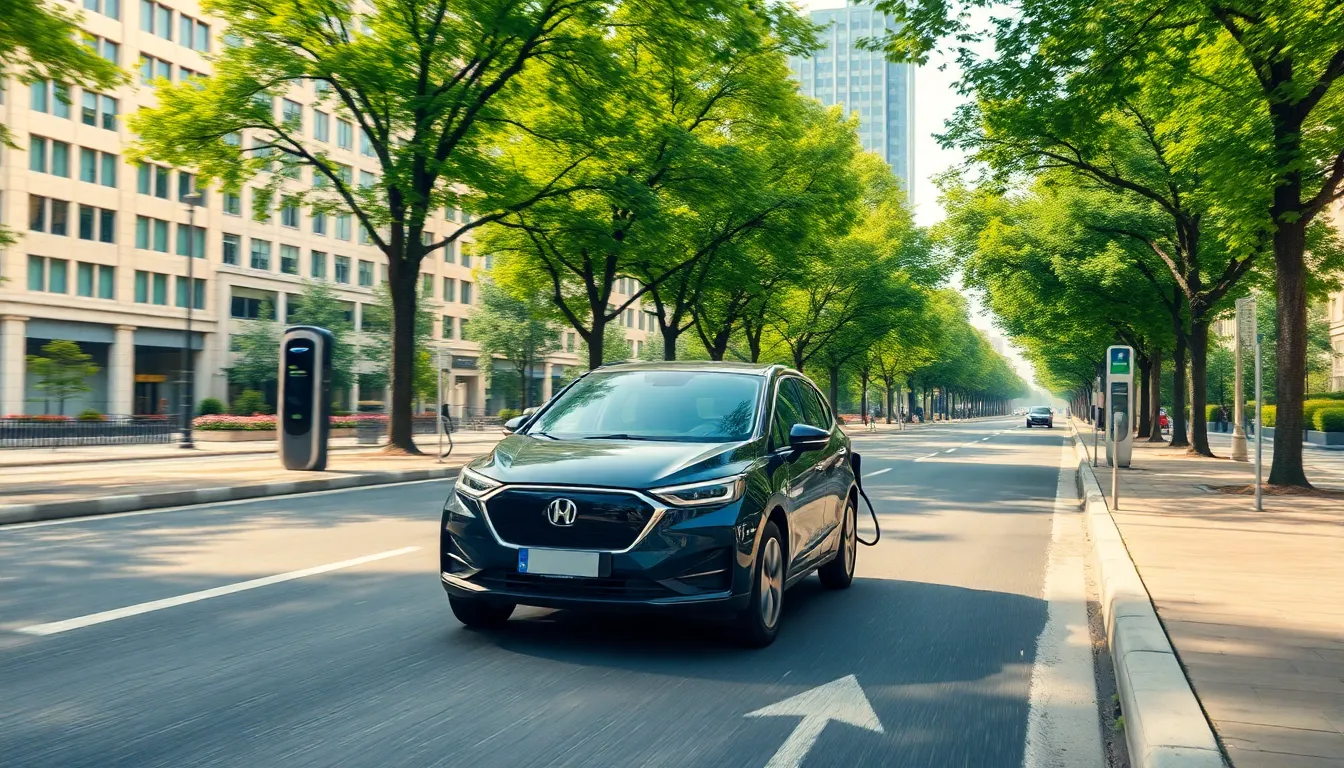
On-road charging solutions are diverse, addressing the varying needs of electric vehicle users. Two primary types emerge: dynamic charging and static charging.
Dynamic Charging
Dynamic charging allows vehicles to charge while in motion. This technology utilizes conductive or inductive systems embedded within road surfaces. Vehicles equipped with special receivers capture power as they drive, minimizing downtime caused by charging stops. Demonstrations in urban areas showcase potential for reduced charging wait times. Many countries explore dynamic charging to enhance electric vehicle adoption further. The innovation encourages longer journeys without concerns about battery depletion.
Static Charging
Static charging involves fixed charging stations located strategically along roadways. These stations enable drivers to recharge their vehicles during scheduled stops. Rapid chargers at these locations offer significant power output, providing quick energy replenishment. Many service stations feature static charging facilities, appealing to drivers needing to top up their batteries. Accessibility to these stations enhances the overall electric vehicle experience by allowing planned charging routines. As infrastructure expands, static charging presents a reliable option for long-distance travels between larger destinations.
Benefits of On-Road Charging Solutions
On-road charging solutions offer numerous advantages for electric vehicle users, easing the transition to sustainable transportation. These benefits contribute to a broader adoption of electric vehicles, fostering a cleaner environment.
Environmental Impact
On-road charging solutions significantly reduce carbon emissions. By facilitating electric vehicle use, they support a shift away from fossil fuels. Renewable energy sources often power on-road charging stations, decreasing dependence on traditional energy systems. Studies indicate that widespread implementation of such stations could lower transportation-related greenhouse gas emissions by up to 70%. As more drivers transition to electric vehicles, these solutions cultivate a more sustainable transportation ecosystem, benefiting communities and promoting cleaner air.
Convenience for Users
Convenience remains a primary advantage of on-road charging solutions. Rapid charging stations provide quick access to power, often delivering an 80% charge in 30 minutes. Drivers appreciate the flexibility offered by mobile charging units, which deliver services to high-traffic areas as needed. Efficient navigation apps help locate charging points, encouraging users to plan trips with ease. Enhanced accessibility fosters confidence among electric vehicle users, contributing to a seamless driving experience. Ultimately, these solutions streamline charging processes, allowing drivers to recharge conveniently and continue their journey without unnecessary delays.
Challenges Facing On-Road Charging Solutions
Various challenges hinder the effective implementation of on-road charging solutions. These hurdles include infrastructure development and technology adoption, both essential for advancing electric vehicle charging networks.
Infrastructure Development
Infrastructure development remains a critical challenge for on-road charging solutions. Insufficient charging stations along major routes creates gaps in accessibility for electric vehicle users. Local governments, energy companies, and automakers must collaborate to build a comprehensive charging network. Strategic placement of rapid charging stations in high-traffic areas enhances convenience for drivers. Funding and resources often limit projects, delaying the installation of necessary infrastructure. Adequate planning ensures that charging locations cater to the growing number of electric vehicles on the road. Addressing geographic and demographic disparities ensures that all regions enjoy equal access to charging options.
Technology Adoption
Technology adoption presents another significant challenge for on-road charging solutions. Not all drivers embrace new technologies like wireless charging and dynamic charging systems. Understanding the benefits of these innovations plays a crucial role in user acceptance. Furthermore, compatibility between various vehicle models and charging systems remains a concern. Industry standards must be established to facilitate seamless charging experiences for all electric vehicles. Education about charging technologies can alleviate apprehensions and foster greater user confidence. Investment in research and development expedites technological advancements and promotes wider adoption of on-road charging solutions.
Future Trends in On-Road Charging Solutions
Innovations in on-road charging solutions continue to evolve rapidly. Wireless charging systems promise to change the landscape, allowing electric vehicles to recharge while driving. Such technology reduces the need for traditional stops, enabling longer travels with less interruption.
Dynamic charging technologies attract attention for their efficiency. Incorporating conductive and inductive systems into the road surface facilitates seamless charging. This advancement may significantly ease range anxiety, encouraging more users to adopt electric vehicles.
Expect mobile charging units to play a crucial role in urban planning. Offering flexibility, these units can address high-traffic areas where traditional stations may be insufficient. They adapt to demand, ensuring power availability when and where it’s most needed.
Sustainability trends will also shape the future of charging solutions. Solar-powered stations contribute to reducing reliance on fossil fuels. Integrating renewable energy sources aligns with global climate goals, promoting a greener transportation infrastructure.
Infrastructural enhancements will focus on strategic placement of charging stations. Positioning rapid chargers in convenient locations facilitates ease of access for electric vehicle drivers. Local governments, energy companies, and automakers are collaborating on this front, ensuring a comprehensive approach to accessibility.
Integration with navigation apps continues to improve user experience. These apps can guide drivers to the nearest charging points, making long-distance travel more manageable. Enhanced mapping and real-time updates will streamline the overall charging process.
Furthermore, standardization is critical for broader adoption. Establishing industry standards for compatibility among various vehicle models simplifies the user experience. Educational initiatives can help demystify emerging technologies, fostering confidence and promoting acceptance of new charging solutions.
Conclusion
On-road charging solutions are set to transform the electric vehicle landscape. With advancements in dynamic and static charging technologies drivers can expect greater convenience and reduced range anxiety. The collaboration among various stakeholders is essential for building a comprehensive charging infrastructure that meets growing demand.
As innovations like wireless charging and mobile units gain traction the future looks promising. Emphasizing sustainability and integrating renewable energy sources will not only enhance user experience but also contribute to environmental goals. Standardization and education will play pivotal roles in ensuring these technologies are accessible and widely adopted. The journey toward a more efficient and eco-friendly transportation system is well underway.

